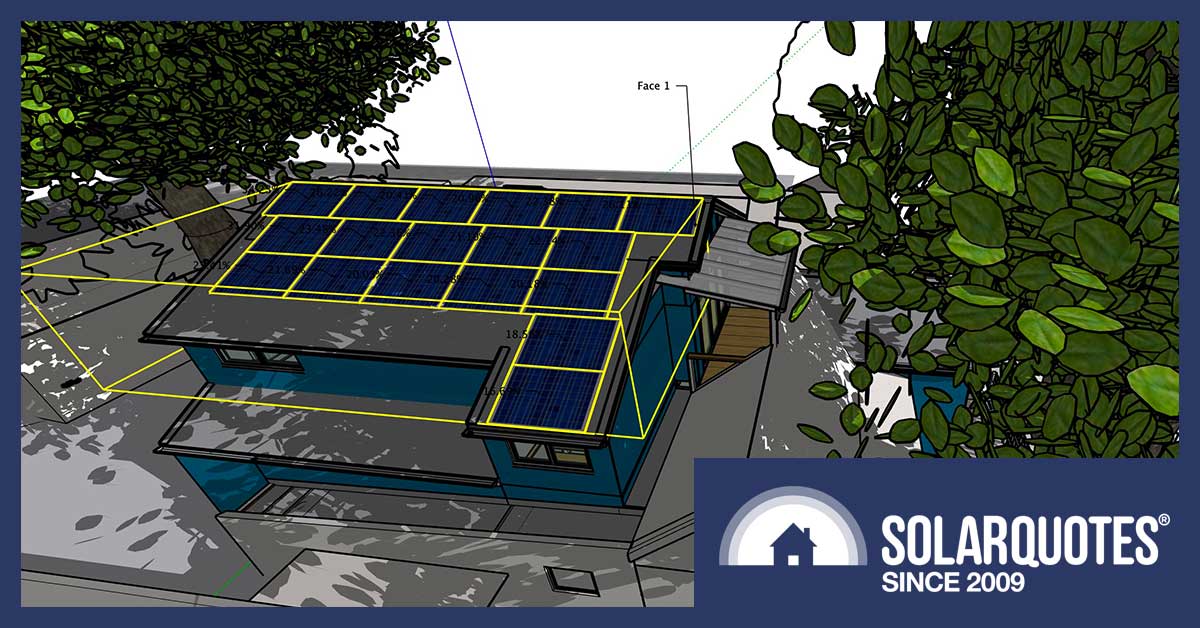
There’s nothing better than a house surrounded by lush green trees. But will those trees make solar panels pointless, or will the shade they cast be manageable? Here’s how to find out.
Max from Sydney emailed this question to the support inbox last week:
“Hi, We have 3 large gums on a small property in Sydney. We are planning to build a 2nd floor and are hoping that gives us enough height to put solar on. Can you help us figure out if we can?”
Here are the drawings he sent through:
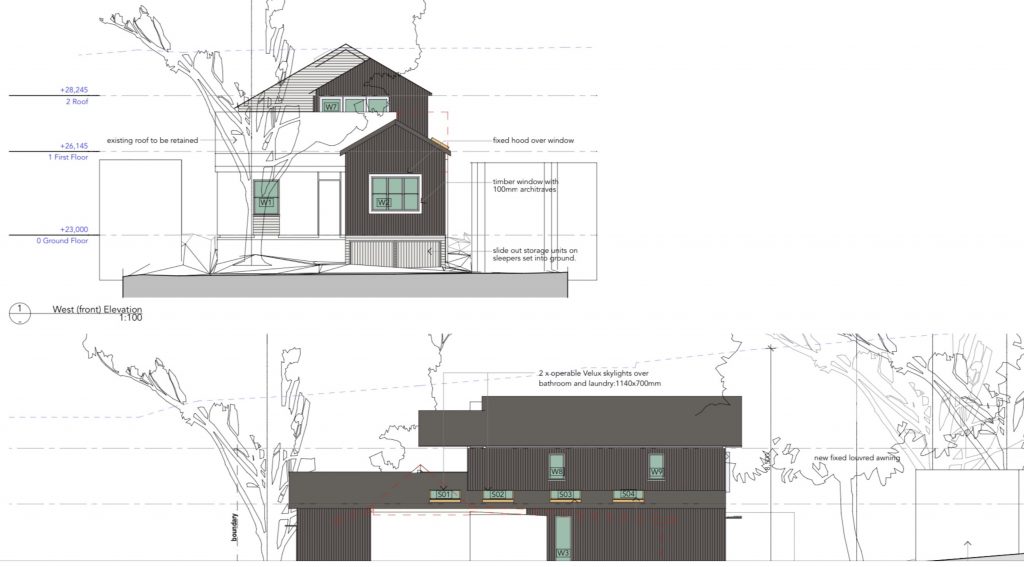
Max’s architect has carefully designed a beautiful 2-storey extension, nestled between trees on the east and west ends of the house.
Now the design has been completed, Max is keen to know if it will be worthwhile to put solar panels on his new roof, or will it be too shaded by those three beautiful gum trees?
In my experience, if you ask a conscientious solar installer this question, many will err on the side of caution and advise against going solar. That might seem like an odd response, but it’s all about reputational risk. The last thing they want is to install a system that doesn’t perform to your expectations – or worse, appears as an opportunistically timed photo on the ‘Crap Solar’ Facebook page taken at just the right time of day to show those shiny solar panels in dense shade.
It’s a shame when home owners decide against going solar on a partially shaded roof without quantifying the shade problem. But you can’t blame them for not dropping thousands of dollars on solar power if no one will tell them how much energy they can expect to generate. Without good advice, they’ll always fear the worst case: investing in panels and getting bugger all solar electricity.
The only way to quantify the shade from trees on a roof before the house is built is to build a 3D model of both the house and the trees. I know, I know, that sounds time-consuming and expensive. But it doesn’t have to be.
Any architect or home builder worth their salt should have your house plans readily available as a digital 3D model. From the 2D pictures Max sent me I could see that a CAD model already existed, so I emailed him back:
“It looks like your architect already has a digital model of your house. Ask him/her if you can get a ‘Sketchup compatible’ model including those trees.
If you can send that through I can do the shade analysis very quickly.”
Step #1 – Load The Model Into SketchUp
Luckily Max had a great architect who was happy to oblige with the 3D model. I promptly received an ‘.skd’ file of the house and trees, which I loaded into SketchUp:
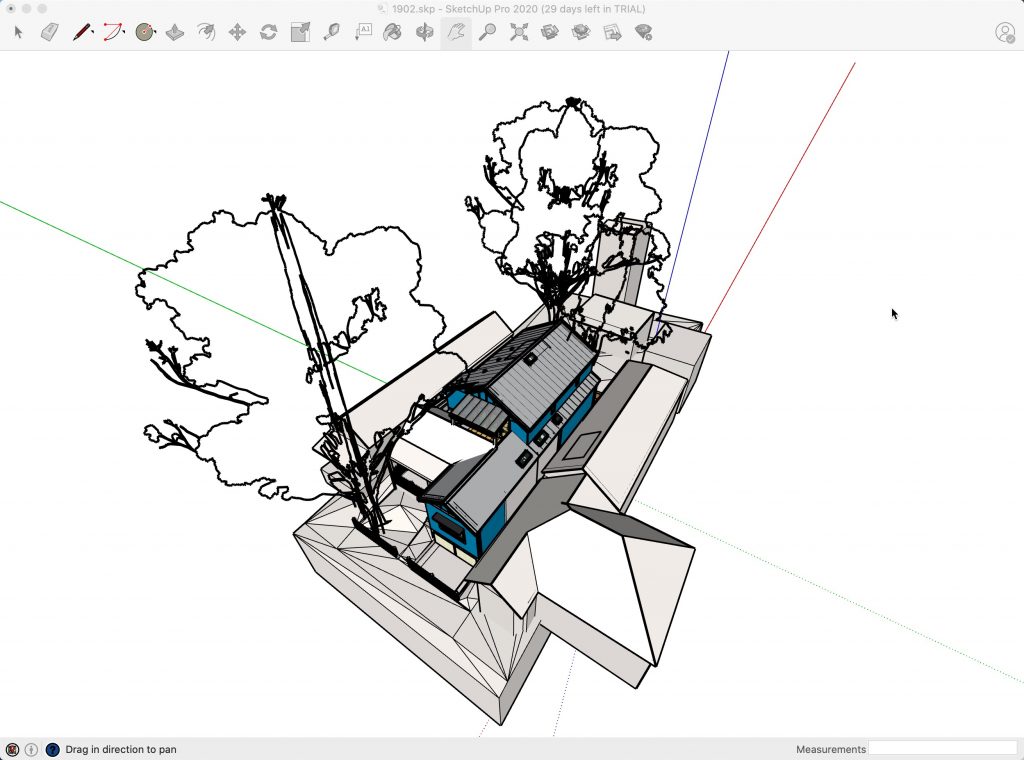
The raw model in Sketchup.
Once the model was in SketchUp I had to:
- Ensure the model was oriented correctly (North in the correct direction).
- Tell SketchUp where on the Earth’s surface the model was located (the house’s lat/long).
- Delete 3 little skylights on the North facing roof, so they wouldn’t interfere with my solar panel models. The solar installers would obviously have to work around these in reality. I would strongly advise holding off on their exact placement until an installer has worked out what panels he/she wants to use and their orientation. Moving a skylight a few centimetres could allow more panels to fit on the limited roof space.
Step #2 – Add Some Solar Panels
Once I’d tidied up the model, I fired up the Skelion Sketchup extension and quickly used it to automatically place some solar panels on the north-facing roof. I won’t go through how to use this tool as I covered how to use Skelion in this post. Unfortunately, my trial period for Skelion had expired – so I had to shell out USD $200 for a licence. Ouch! But it will be worth it if it means one more house with solar panels on its roof.
Here’s the roof with the solar panels on it. I haven’t given any thought to the panel layout – just squeezed lots of 300W Jinko panels on there for the purpose of the shade analysis.
Step #3 – Upgrade The Trees
Unfortunately – the trees in the architect’s model have been drawn in such a way that they do not cast a shadow. I fiddled around trying to ‘fill them in’ but being such a rank SketchUp amateur, I failed miserably.
So I headed over to SketchUp’s 3D Warehouse where there are lots of free tree models to download:
I chose a suitable looking tree and dropped it into the model three times, each time positioning and scaling the model to match the outline of the existing tree models approximately:
Now to state the bleeding obvious: the tree models will not be the same shape as the real trees in Max’s garden. This is an approximate model and analysis. But it will be much better than a wild-assed-guess, and hopefully, give Max confidence to either proceed or give up on his solar energy dream.
Step #4 – Play With The Shadows
Now we have a geo-positioned model of Max’s house and an approximation of his trees. We can use SketchUp’s shadow rendering engine to see how shadows are cast at any time through the year. We can discover some interesting characteristics by playing with the date and time sliders.
For example, in January shadow starts encroaching from the east at about 11 am.
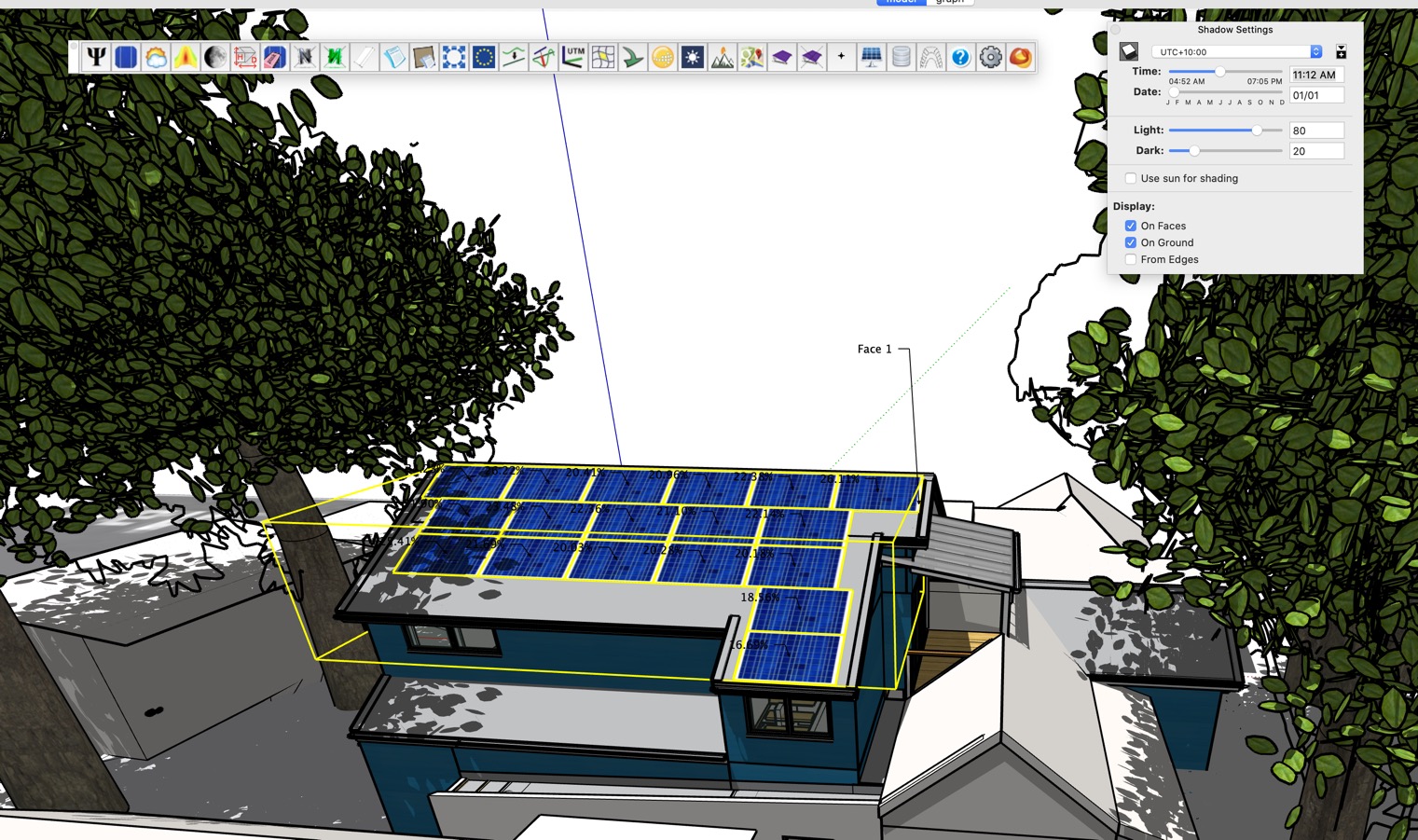
Summer shadows arrive from the east at 11am
Then at 1:30 pm they start to appear from the west:
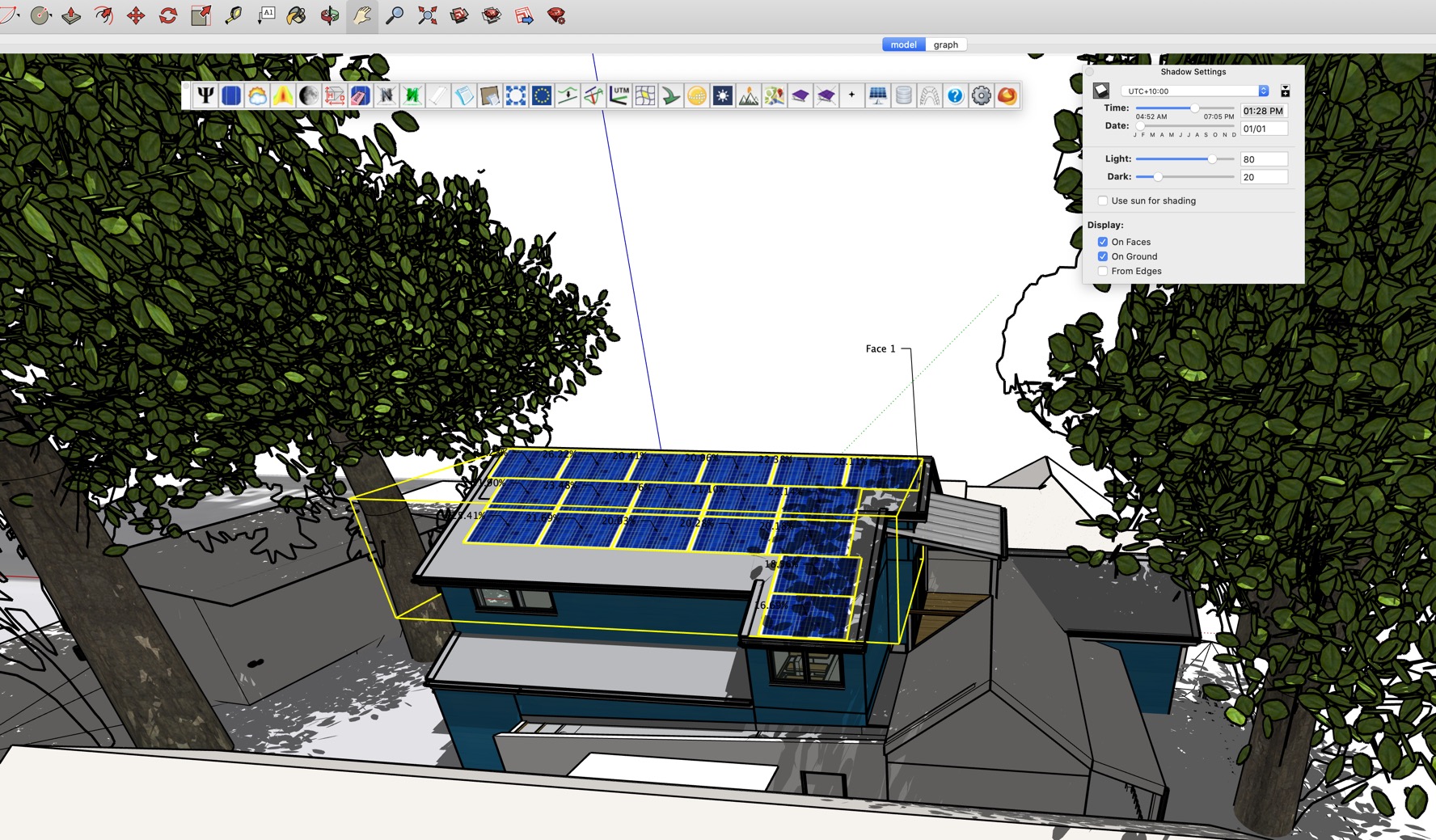
A couple of hours later, the summer shadows arrive from the west.
Step #5 – Run The Skelion Report
The Skelion report tells me how much shade will be cast on the panels over a full year. It also shows the shade effect month by month.
Here are the results:
If my model is accurate, then Max will lose about 23% of his energy yield due to shading, more in summer than winter.
That seems a bit odd to me – as the winter sun casts longer shadows. To be safe, I did the analysis again, replacing each tree with two solid rectangles:
That ‘worst case’ tree modelling gave me this report:
The winter shading has gone up substantially – but the annual shading is only up to 27.84%.
What About The South-Facing Roof?
I can only fit about 5kW of panels on the north-facing roof. If Max loses a quarter of his energy to shading – the 5kW array becomes the equivalent of a 3.75 kW array in full sun. That’s a bit small for a modern home. So what about putting more solar panels on the south-facing roof?
Edit: As commenters have pointed out – Max should also use the most efficient panels he can afford as he has very limited roof space. He should be able to get up to 345W per panel with similar dimensions.
Using the roof direction vs. energy yield table on this page, I can see that an unshaded, south-facing 30º roof in Sydney will yield 63% of the energy of a north-facing roof:
Combine that with the tree-shading, and those panels will probably lose about half their energy yield compared to unshaded, north-facing panels. Some people will be OK with that, for others, halving the energy yield will be too much to bear.
But I’d definitely consider putting some more panels on the little, second north-facing roof. He should be able to squeeze at least another kilowatt of panels on there.
Is Solar Worth It With Those Trees?
Back to Max’s original question. Should he get a solar power system?
With estimated losses of 20-30%, I think he should. But Max can decide for himself by using our solar calculator. He simply uses a system size (in kW) 30% smaller than will be installed, but keeps the dollar price of the installed system. For example, if he was quoted $7,000 for a 6kW installation, he should tell the calculator he has 4kW of panels that cost him $7,000. This will give him approximate returns from his shaded roof. (I will be adding a ‘shading %’ input to the calculator soon to make this process more intuitive).
I’d also get a Suneye analysis done once the house is built, but before he commits to buying solar to verify my quick & dirty analysis.
For a couple of hundred bucks, he can pay someone to get on his new roof and perform an accurate shade analysis with a dedicated instrument using a fisheye lens to trace the actual outline of the surrounding trees.
This will allow Max to accurately benchmark:
a) my competence
b) his solar power system’s performance based on a very accurate shading-effect percentage. If he doesn’t know for sure how much shade is on the roof, he’ll never be sure if his solar system is working to the best of its abilities.
And above all, he will be able to decide with high confidence whether an investment in solar power will be worth it for him.
I’d also recommend an Enphase microinverter system for this job, as they are my favourite way to handle shaded arrays.

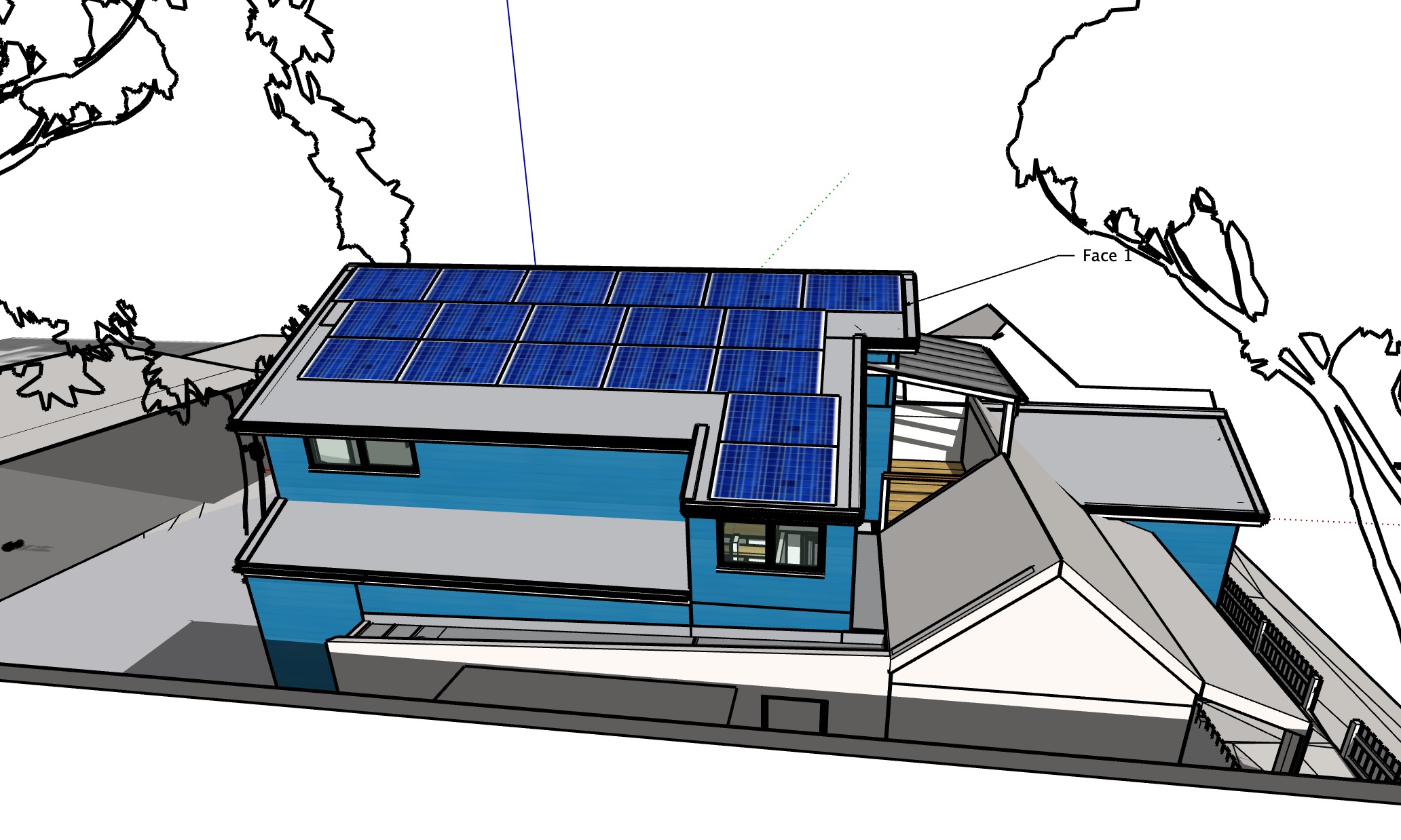
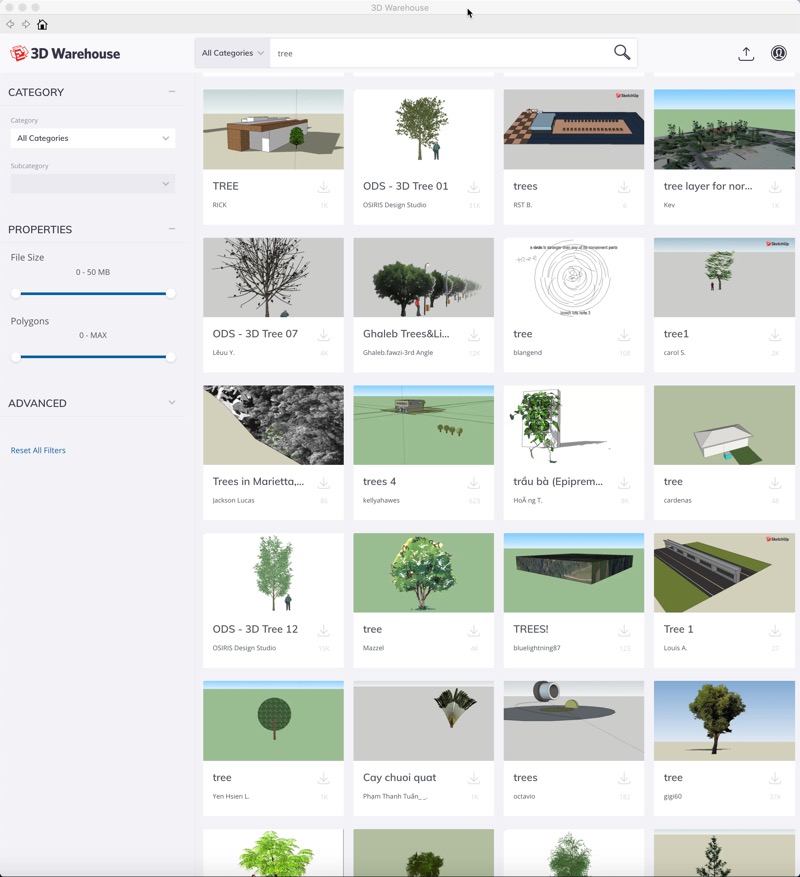
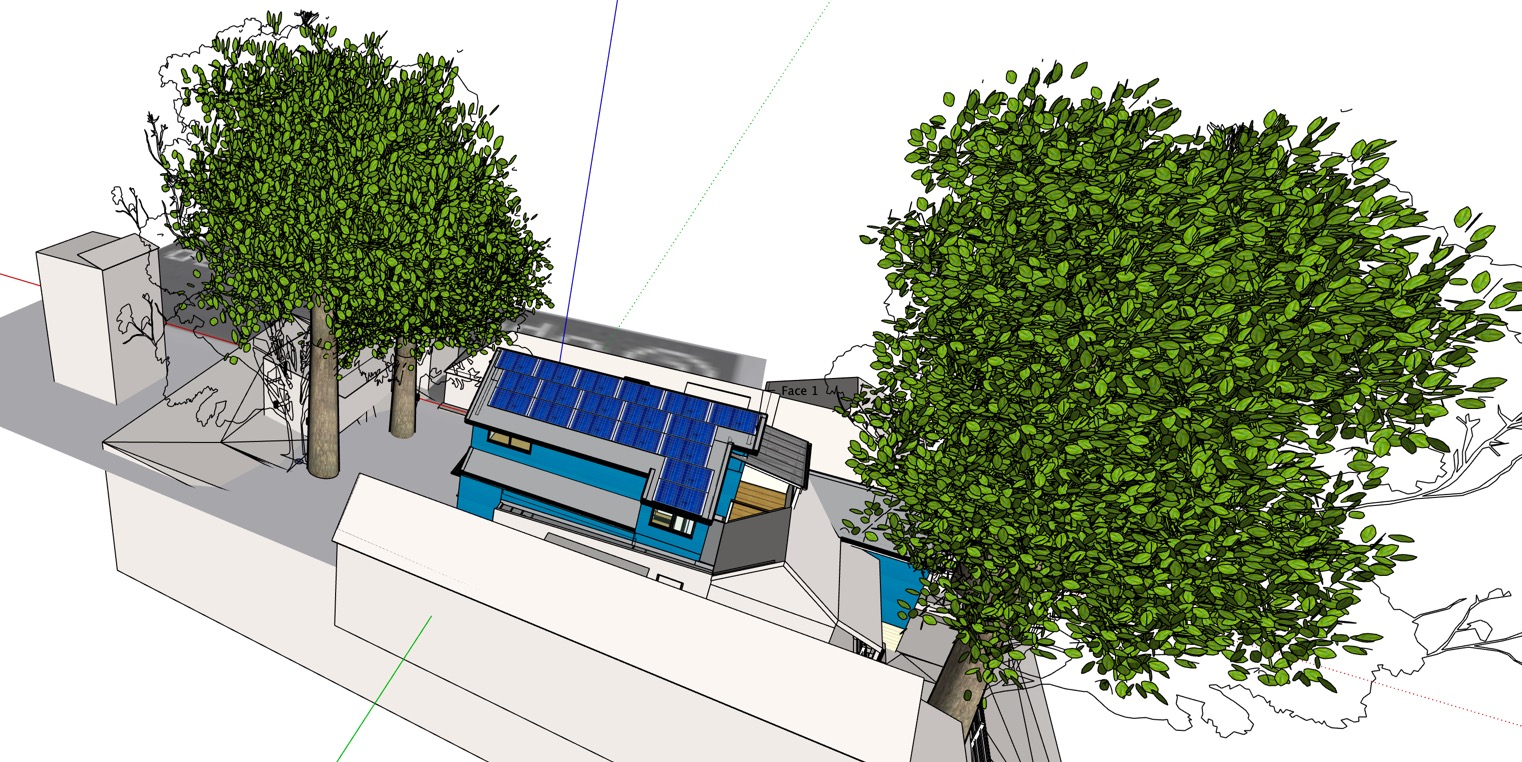
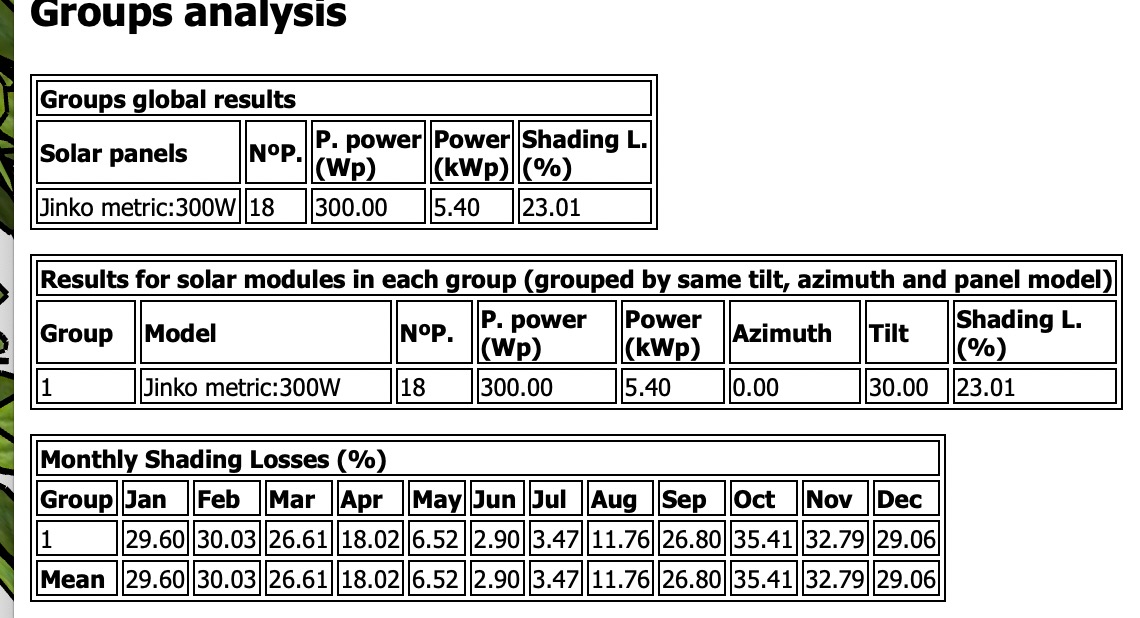
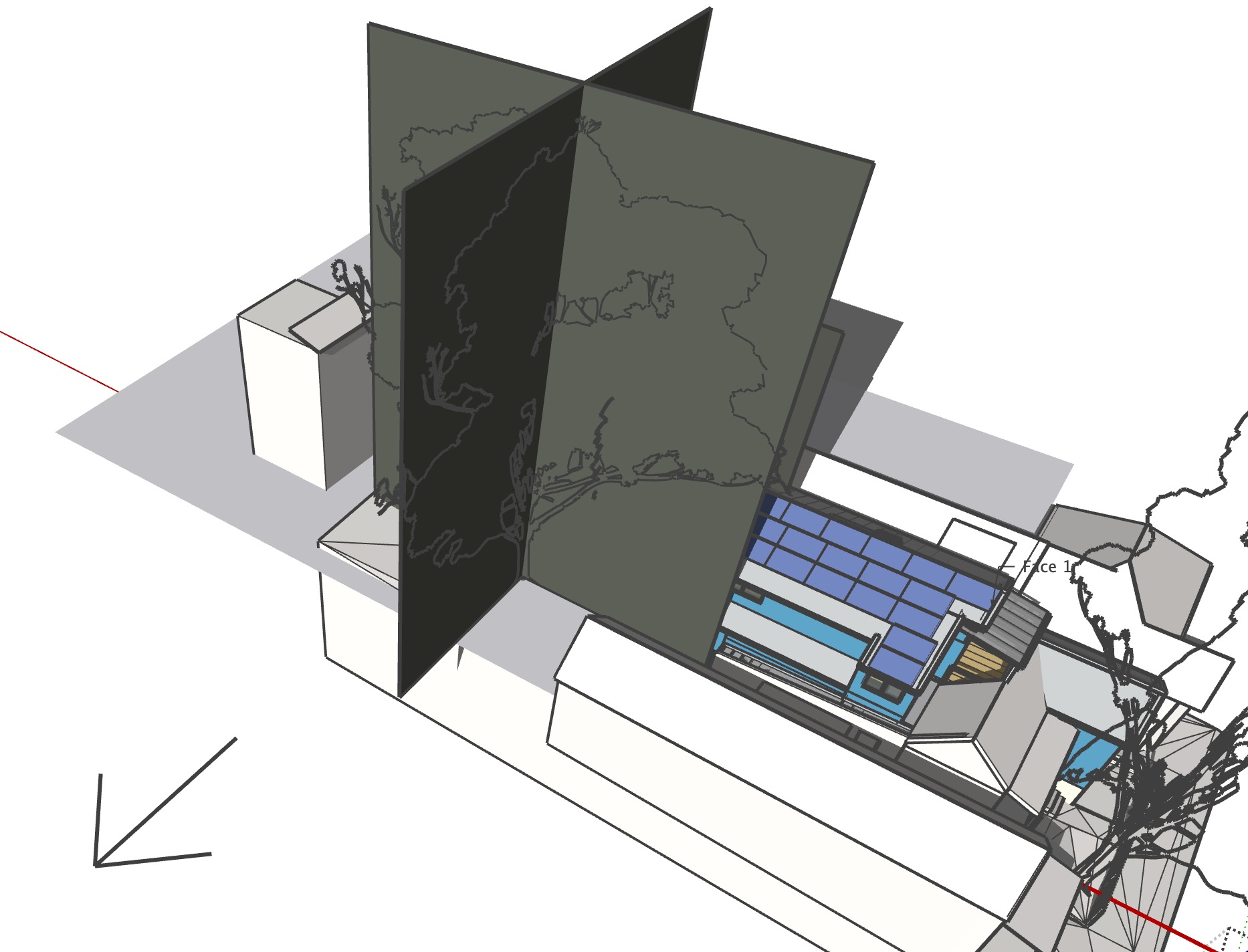
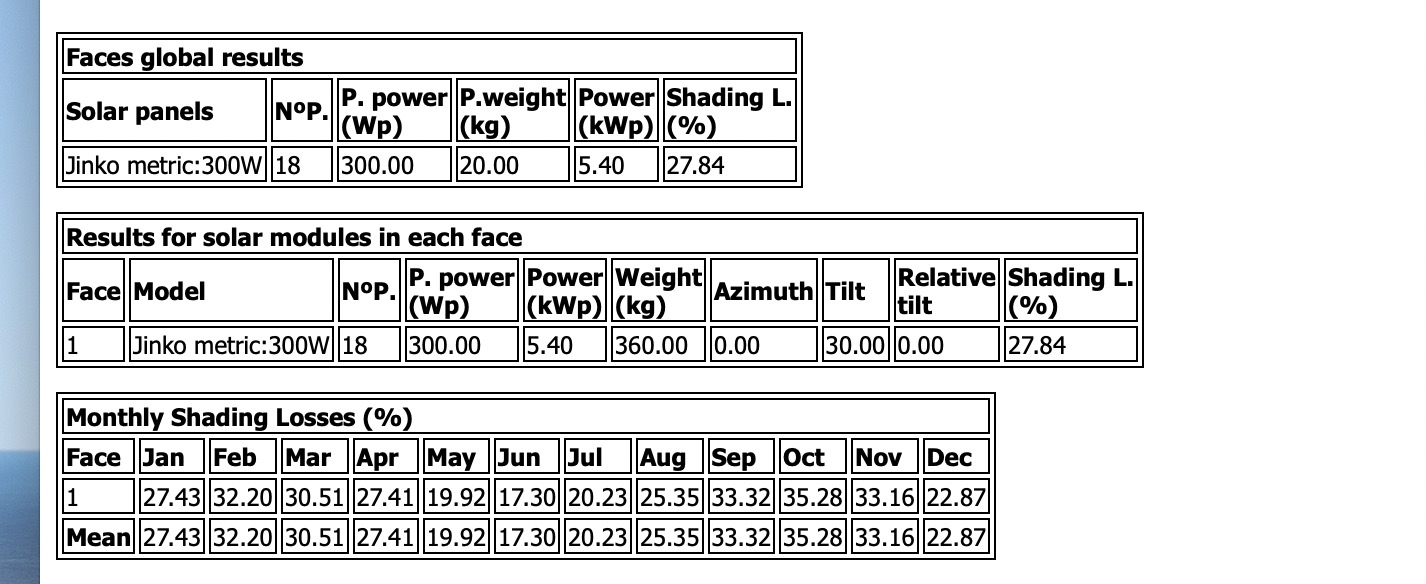
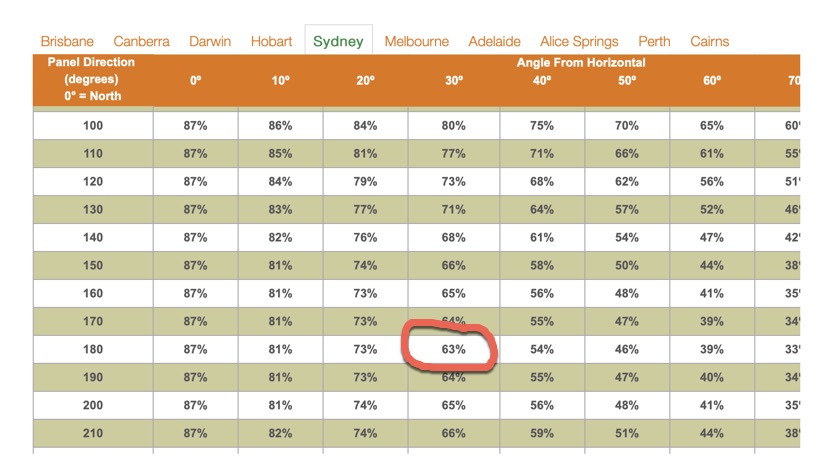
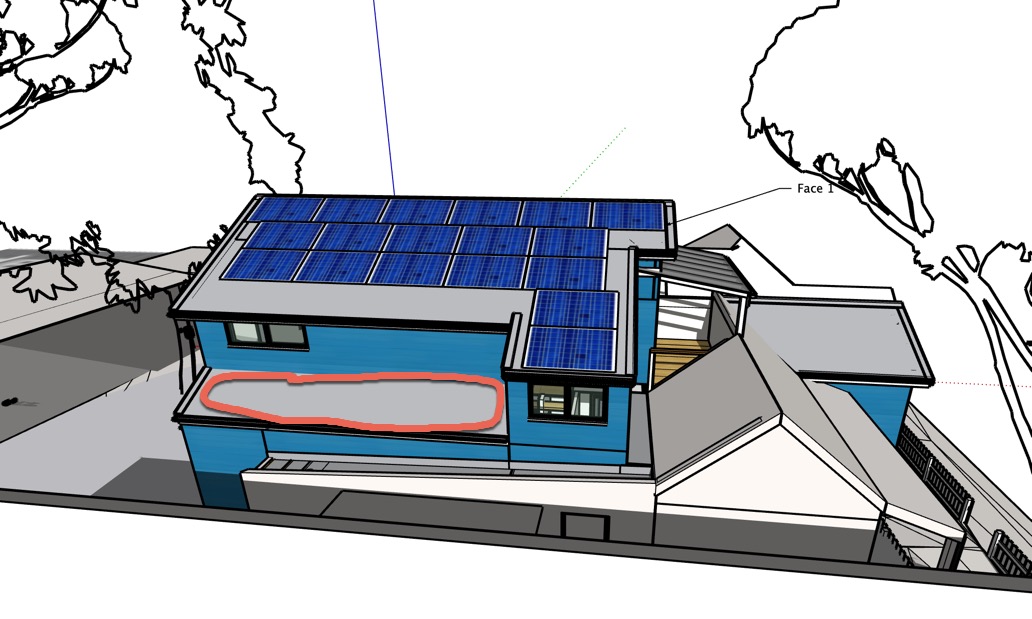
 RSS - Posts
RSS - Posts



That is a serious analysis- well done. I would think it also necessary to know what kind of tree we have. Eg does it drip a waxy coating that will grow fungus and reduce solar transmission?
Those of us that put solar on when it was double or more the cost wouldn’t hesitate to install this systemwith these figures as it is a feelgood thing to do….
Just a comment: There seems to be no use of the garage/carport. Also this seems to me to be a roof where a N-S ridgeline might help. (This is a design feature I feel is not used enough in new designs: Pannelling the West might also reduce the Western roof Heat gain inside the house (due to airflow under the panels)
The other design feature I have not noticed in new designs is using Panels only as a Carport roof. There are now panel systems that a reasonably waterproof.
Have you ever seen a study that looks at building heat gain reduction using Western Solar panels?
I’d say ditch the idea of sky lights. Led lights use so little power and the return on extra watts on the roof far outweigh their consumption if even left permanently on 24/7
Great analysis Finn – would have to be very useful to many.
We have distant (hoizon) trees both East and West that delay best power generation in the morning (when we could benefit from self-use for breakfast), and advance the loss of best generation in the late afternoon, with similar consequences – we don’t have optimisers nor microinverters.
Our East facing roof has 8 x vertically oriented panels in a top row, and 4 in a second row which are obviously the last to come out of shade. I’ve often wondered if the 2nd row should be reoriented with panels horizontal – which would have them come out of shade a little earlier – but couldn’t decide if the cost to do this would be worth the effort (probably not).
At least now I have your methodology to help consider this option.
Thank you.
You might also try and make a shade analysis yourself using the Scanthesun app, which turns your smartphone into a pretty good shade analysis system and gives some nice reports as well. I used it to plan a recent job, only to find my worst fears confirmed: a 60% shading and panel angle loss. A quick calculation showed at least a 14 year payback, which made my decision not to install solar (unfortunately) pretty straightforward.
http://scanthesun.com/scanthesun.php
In Melbourne we had to consider our two Lemon Scented gum trees on the West and native trees in the North/West corner. The solution was an East facing 10.6kW system of 28 LG 345kW panels and 3 LG 345kW panels to the North, more as a test to see what we could have generated there, with Enphase inverters.
I can’t find a way to insert pictures here but our best day, 27th December 2019 was 63kWh Solar generated and through Sept – March inclusive we have average 41kWh/day and still in negative bill territory.
The last 11 months the
3 x North panels averaged 37.8kWh/mth
28 x East panels averaged 32.5kWh/mth
17 x East Lower run Averaged 32.06kWk/mth
11 x East Top run Averaged 33.02kWh/mth
I max’d out the roof because I knew there would be less output from the East but we are allowed to export 10kWh and our best peak was 8.6kW which is about 81% of the panel capacity.
So an inverter for every panel.. The inverters capacity is 295kW and each panel is 345kW
So overall a good result.
Hi Colin
I guess it’s difficult to compare possibly due to different latitudes – but by proportion with my system (in Perth, but somewhat shaded morning and evening due to being in a lower lying area), I’d think you are probably achieving about 70% of what we are achieving.
Our system is 5 years old, has a 5 kW string inverter, with a panel notional capacity almost exactly half yours. It tops 45 kWh in December – so 90 kWh in your terms.
BTW – a typo noted – I doubt your microinverters do 295 kW…!
Ian…
I agree, they are Enphase IQ7+ inverters and rated at 295kW. On our peak day they averaged 277kW..
That’s why we maximized the number of panels with the LG Neon 345 panels to get the most we could out of the predominately East panels and build in some degradation. Cost a little more but it’s been well worth it..
With our pensioner discounts and Solar we have been in negative bill territory for the last 12 months.
7 weeks ago we installed our first Powerwall 2 and enjoying it’s contribution to the task. I’m glad we had it installed in Autumn so that we could measure it into Winter. Setting the battery reserve to 20% we age getting the battery fully charged by 1pm and then we enjoy about 11 hours of “free” power.. April we were getting up to 17 hours. So looking forward to June 21st when the sun starts to get higher..
Hi Colin,
Maybe I am missing something but I cant see the point in using a panel with output of more than 300 W if the IQ7+ has a max cont rating of 290 VA (300 W at unity power factor and 96.5% efficiency). Wouldnt it be better to have an inverter which is capable of utilising the max dc output of the panel.
cheers
Hi Neville
Because solar panels rarely provide power at their rated output it can make sense to have a panel capacity that is greater than the inverter capacity. In Australia an on-grid system can have panel capacity up to 133% that of the inverter capacity and at that ratio very little solar electricity is lost as a result. Here’s an article about it:
https://www.solarquotes.com.au/blog/oversizing-solar-arrays/
Neville. I was guided by Finn’s book and discussions with my installer.. There is a rule of thumb in Australia that the system size should be 33% greater than the inverter size. In our case this is about 15% or 20% on the real effectiveness of the inverters.. This extra capacity was partially covered by the extra STC’s the installer received and we are allowed 10kW Feed in in Melbourne..
We also went for Tier 1 equipment and on the day of ordering, LG released the 345kW panels which we received at no extra cost.
We were trying to maximize the use of the roof space for the panels on our East and the Enphase to cover the shade issues with our trees.. We were happy the extra capacity covered things like
Dirty panels
Efficiency loss in cabling
Efficiency loss in the panels over time
Temperature losses from the panels.
In the end, the cost was $1,600/kW of panels using Tier 1 equipment, maximized the STC’s, and enjoyed a manufacturers discount equivalent to the Vic Gov solar panel rebate. In June 2019 the going was tough in Victoria for the installers because of the lack of Solar rebates from the Vic Gov..
So with all of that, we were extremely happy with the approach our installer, Enphase and LG took with our installation. Our first PW2 battery is working perfectly in testing Autumn times and we are planning our 2nd battery later in the year because we are a heavy user and the baseload here is 14kWh/day from a 24 hour house.
I would think about reducing the height of the trees and maintaining them so that they don’t exceed the height of the house, or removing them and replacing them with a more suitable native plant / shrub. That way you can get the full benefit of the solar panels and reduce the risk of impact damage to the house during a storm. Eucalypts are notorious for this sort of thing.
Lopping trees on a block in the Inner West is a bureaucratic fustercluck of a task.
Crazy thinking, isn’t it Alex.
I’d think in most cases the CO2 offset from the extra CO2-free Solar energy generation could quite quickly exceed the loss of parts of a few trees – then continue saving more for the remaining life of the system.
The numbers are not hard to do – burning 1 kg of dry wood generates about 16 MJ of heat energy – at 33% conversion to electricity efficiency (maybe typical for a wood-burning thermal plant), this equates to 16 x 0.0926 = 1.5 kWh.
If you only produced an extra 1.5 kWh per day by removing shade, then you could justify removing 365 x 5 = 1.8 tonne of wood for a total recovery of the lost CO2 sequestration, in only 5 years – thereafter a real bonus. In someone else’s example of heasvy shade, the figure might be closer to 10 kWh/day, i.e. more than 6.7 times as much, nearly 12 tonne – still recovered in 5 years.
Fustercluck it is – Bureaucrats can’t think their way through technical issues – reminds me of the Volgons in Douglas Adam’s Hitchhiker’s Guide series of books…
Ian – just for balance, i feel compelled to point out that mature trees have other benefits beside the fuel value of their timber, eg.:
* Habitat for native birds and animals
* Shade, which reduces the energy consumption required for domestic cooling
* Reduction of urban “heat island” effect
* Improved air quality
While this shouldn’t mean that trees can never be cut down for solar – it does mean that the benefit ought to be justified on a case-by-case basis at least.
Otherwise, we’re just further destroying the natural environment to make it easier for the less ethical sellers of another short-lived consumer product…
Or maybe install the “Sun Surveyor” or something similar app on your phone, Get up on your roof where the panels will be, dial in whatever day of the year you are interested in, probably a mid winter one is most useful, and the app will superimpose the suns path across the actual view before you in the camera showing you whether there is anything shadowing you by any object in your vicinity, trees, houses etc. for every minute of the day, take a screenshot for posterity, really simple, cheap, takes maybe 10 minutes and you can get a beautiful view of your neighbours properties. No modelling or interpretation required.
Maybe a simple lop off the top of an offending tree will give you 100% unobstructed sunlight.
Worked perfectly for me.
Would you have any more information about the Sun Surveyor application eg the Authors name?
Sun Surveyor
It’s written primarily for photographers planning a photoshoot when they need to know precisely where the sun would be at any time on any particular day for any location.
You will find it at the Apple App Store or on Google Play, just search for “Sun Surveyor”.
It can also operate with Street View in Google Earth so you can see where the sun would be at any time for your street view location almost any place on earth. Has many uses beyond photography or placing solar panels ….
Here is a video of what it can do, https://youtu.be/zzKOBtTbUmg
Previous link was only for overview of Sun Surveyor, the part that would interest you is the Live View video here https://youtu.be/-ixs1pPUtiM
For the Google Maps Street View video look here https://youtu.be/eloN8QArTgA
Sun Surveyor is an extraordinarily powerful app rich with features, Hence the number of videos, and no I do not have any connection to the company whatsoever, I do photography and along with advice gleaned from Solarquotes site 3 years ago I used Sun Surveyor to help determine the effect surrounding trees and buildings would have on my system. I guess that if you were considering increasing your roof height a selfie stick could be handy!
I have a question that I would like people’s opinions on please. For example in the situation where there is shading would it be better to have 22x300w panels with 22 Enphase IQ7’s or 24x275w panels with 24 Enphase IQ7’s. Both arrangements have 6.6kw of panels but I believe the IQ7’s are not capable of that level of output.
Peter.. I would even consider higher rated panels to allow for the inefficiency in the system as per my post awaiting approval. Our panels are 345w
The best we got from our IQ7+ inverters was 277kW on the best day in December 2019 when it peaked at 8.6kW on a 10.6kW system
This link will help from Ron in another post.
https://www.solarquotes.com.au/blog/oversizing-solar-arrays/
Did you also account for for solar exposure (from the Bureau of Meteorology website) on a monthly basis for the location?
Not sure why you went with the 300 watt Jinko’s, Finn. The 330 watt ones are pretty much the same size, and obviously more efficient, at little extra cost. I’d also strongly advise micro inverters such as enphase iq7+ to maximise the output when partially shaded.
I’m no expert, just an enthusiast. But that’s my 2 cents!!
To Peter W. Just go with the IQ7Plus, they cost a few bucks more but capable of more power per inverter. I think the 330w Jinko’s match them well, too.
Another question I have is regarding the capacity of an inverter if it is a set of micro inverters. Eg If I have 22 Enphase IQ7’s and an Enphase Envoy then what is the capacity of my inverter?
Your home’s total inverter capacity will be the sum of the all the microinverter capacities. Looking on their datasheet, I see the Enphase IQ7 is a 240 watt microinverter. With 22 of them the total inverter capacity would come to 5,280 watts.
My roof line runs north south so I can only place panels facing east or west. On the east side we’re relatively unobstructed but we’re the lowest house in our street and the blocks on the west side would block some afternoon sun. Are there any tools that can account for the local landscape and not just trees to work out how much sun I’d lose each day?